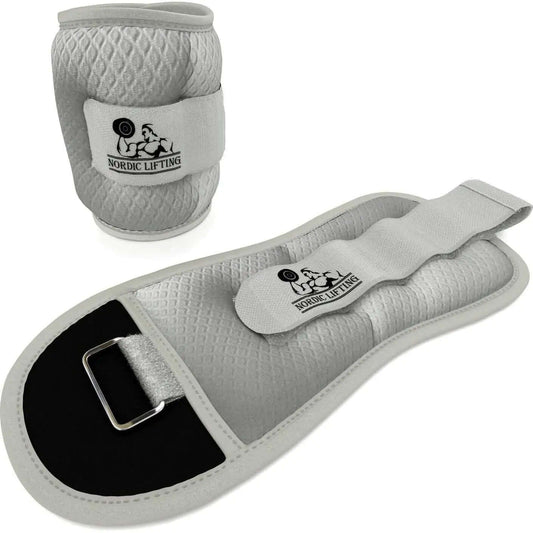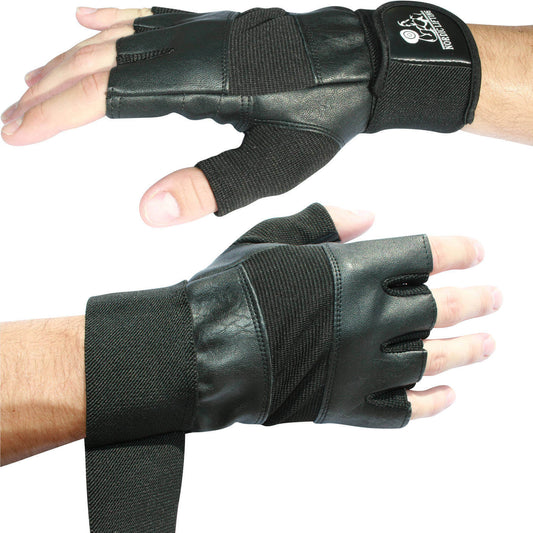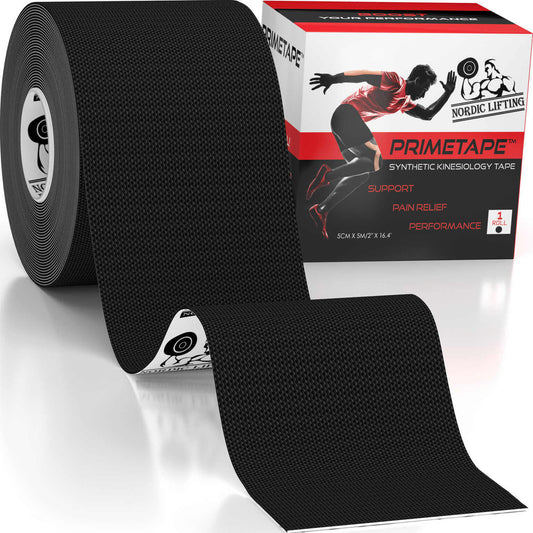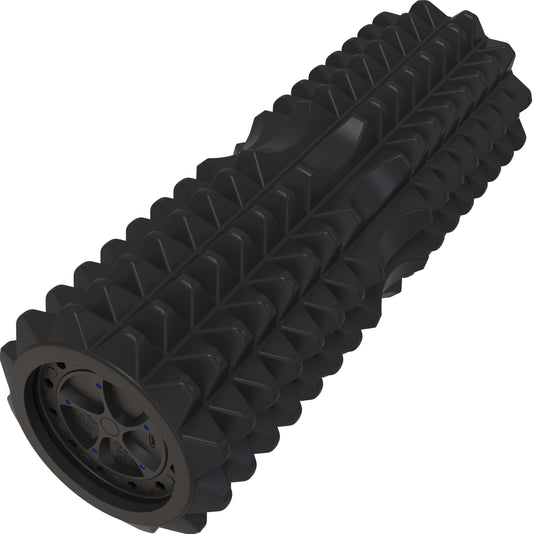Last Updated: April 17, 2025
Measuring knee sleeves correctly is important for getting the right fit and support. The best way to measure is by wrapping a tape measure around the center of the kneecap while the leg is slightly bent or straight, depending on the brand’s instructions. This simple step ensures the sleeve will stay in place and provide proper compression.
It’s also helpful to measure the calf, especially if it is much larger than the knee, to decide if sizing up is needed. Understanding how to measure properly can save time and money by avoiding sleeves that are too tight or too loose.
Knowing the right measurement process helps anyone choose sleeves that improve knee stability during exercise or recovery. This guide will explain what tools to use, how to take accurate measurements, and how to match them to sizing charts.
Key Takeaways
- Accurate measurement helps find knee sleeves that fit well and provide support.
- Measuring both knee circumference and calf can improve sizing decisions.
- Following proper steps avoids buying sleeves that are uncomfortable or ineffective.
Understanding Knee Sleeves
Knee sleeves provide support and compression to the knee joint. They differ from other knee gear like knee braces and knee pads. The benefits mainly come from the compressive fit, which helps with stability and swelling control.
What Are Knee Sleeves
Knee sleeves are made from stretchy, thick fabric, often neoprene. They fit snugly around the knee to offer gentle compression. This compression improves blood flow and can reduce pain and swelling during or after activity.
They do not have rigid parts and don’t lock the knee in place. Instead, they provide warmth and support to soft tissues around the joint. Commonly used in weightlifting, running, and other sports, they help prevent minor injuries and improve comfort.
Knee Sleeves vs Knee Pads vs Knee Braces
Knee sleeves provide compression and basic support with flexible material, mainly for joint warmth and improving circulation.
Knee pads protect the knee from hard impacts. They have extra padding but usually don’t offer much support for stability or injury prevention.
Knee braces are stronger, with metal or plastic stabilizers to limit joint movement. They are used in serious injuries or for rehabilitation.
| Gear type | Purpose | Support level | Protection level | Mobility |
|---|---|---|---|---|
| Knee Sleeve | Compression and warmth | Low to medium | Low | High |
| Knee Pad | Impact protection | None | High | High |
| Knee Brace | Stabilization | High | Medium to high | Limited |
Benefits of Compression
Compression from knee sleeves supports muscles and joints by reducing stress during movement. It helps decrease swelling and inflammation from exercise or injury.
Better blood flow caused by compression speeds up recovery. Warmth from the fabric keeps the joint loose and less prone to stiffness.
Compression also provides proprioceptive feedback, meaning it helps the brain sense knee position better. This can lead to improved joint control and injury prevention during activity.
For accurate fit and effectiveness, measuring the knee circumference at the center of the kneecap while slightly bent is important. This ensures the sleeve isn't too tight or too loose. See how to measure for knee sleeves for more.
Why Measuring Knee Sleeves Accurately Matters
Getting the right size for knee sleeves is important for both comfort and performance. The fit affects how well the sleeve supports the knee and how it impacts movement and circulation.
Impact on Full Range of Motion
If knee sleeves are too tight, they can limit the bend and stretch of the knee joint. This restriction can make activities like squatting, running, or jumping uncomfortable or less effective. On the other hand, sleeves that are too loose won’t provide enough support, which can increase the risk of injury.
A properly sized sleeve will move with the knee without cutting off motion. It should allow the knee to bend fully while offering steady compression around the joint. This balance helps maintain strength and stability during exercise without feeling like a cage.
Effect on Blood Flow
Knee sleeves need to provide firm compression, but not so tight that they block blood flow. Poor circulation can cause numbness, swelling, or even skin damage over time.
If the sleeve compresses too much, it can reduce oxygen and nutrient delivery to the knee tissues. This slows recovery and may cause discomfort during use. Conversely, sleeves that are too loose don’t support the joint or improve circulation effectively. Finding the right fit helps keep blood flowing while offering the needed support for healing and performance.
Measuring correctly ensures a sleeve applies balanced pressure without cutting off circulation or causing pain. For tips on precise measurement, see how to measure for knee sleeves properly here.
Essential Tools and Preparation
Accurate measurement requires the right tools and careful preparation. Having a flexible tape and knowing how to position it correctly ensures a good fit. Proper setup reduces errors and helps select the correct size.
Measuring Tools Needed
The most important tool is a flexible cloth or plastic tape measure. It should wrap smoothly around curved surfaces without stretching or bending.
Rigid tape measures or rulers will not give accurate results because they cannot contour to the knee. A tape at least 60 inches long is preferred for comfort.
It helps to have a pen and paper or a phone to record measurements. This avoids forgetting numbers during the process.
Wearing light, fitted clothing or bare skin is best. Bulky clothes can add extra width and cause errors.
Preparation for Measurement
The person should stand or sit with their knee at a natural bend of about 90 degrees. This simulates the position when the sleeve will be worn.
The knee's midpoint, located at the center of the kneecap, is the key spot for measuring circumference. Measurements may also be taken just above and just below this point for some sleeve types.
The tape must be snug but not tight. Pressing too hard compresses the skin and changes the size. The tape should lay flat without gaps or folds.
Taking multiple measurements and averaging them increases accuracy. This step ensures consistency before choosing the sleeve size.
For detailed guidance, see how to measure knee sleeves for CrossFit and weightlifting.
Step-by-Step Guide to Measure Knee Sleeves
Measuring knee sleeves requires precise steps to ensure the right fit. The most important measurements include the circumference of the knee itself and the surrounding thigh and calf at specific points. These measurements are usually taken with the leg bent slightly to mimic the sleeve’s natural fit during movement.
Finding the Knee Circumference
The first key measurement is around the knee cap. To do this, the person should bend their leg about 30 degrees. This slight bend helps capture the natural angle where the sleeve will sit during activity.
Using a flexible measuring tape, measure the circumference directly over the kneecap. It’s important to keep the tape snug but not tight, allowing for accurate sizing without restricting blood flow.
Some brands suggest measuring slightly above or below the kneecap, but the standard is to focus on the center of the knee joint. This measurement is the foundation for picking the correct knee sleeve size and should be recorded carefully.
Measuring the Thigh and Calf
Next, measure the thigh and calf where the sleeve will cover. The thigh measurement is usually taken about 4 inches (10 cm) above the top of the kneecap. This area is critical because a sleeve that is too tight here can cut off circulation or slide down during movement.
The calf measurement is typically taken about 4 inches (10 cm) below the kneecap. This ensures the sleeve will stay in place and provide support without being too loose.
Both measurements should be taken with the leg at the same 30-degree angle used for the knee. Like the knee measurement, the tape should be snug but not tight to ensure comfort during use.
For reference, many brands provide size charts to compare these three measurements and find the best fit. Using all three measurements together improves sizing accuracy and performance.
See more on how to measure properly at TuffWraps Knee Sleeve Measuring Guide.
Using Sizing Charts and Guides
Choosing the right knee sleeve size depends on careful measurement and comparing those numbers with clear sizing information. This helps ensure the sleeve fits snugly without being too tight or too loose. Understanding how to use both sizing charts and guides is key to making the right choice.
Interpreting Sizing Charts
A sizing chart lists measurements alongside corresponding sizes like small, medium, or large. The most important measurement is usually the circumference of the knee or just above and below the kneecap.
Users should measure their knee with a soft tape measure while standing or with their knee slightly bent, depending on the brand’s instructions. They then match this number to the closest measurement on the chart.
Some charts include a weight or height range, but the knee circumference is the most consistent indicator. It’s best to follow the chart strictly because each brand’s sleeves stretch differently and need a precise fit.
Following a Sizing Guide
A sizing guide explains how to take accurate measurements and how tight knee sleeves should feel. It often includes step-by-step instructions.
Most guides recommend starting at the middle of the kneecap, measuring the circumference 4 inches above and 4 inches below to capture full thigh and calf size. This helps find the best fit if the brand uses multiple measurements.
Guides also suggest the sleeve should feel firm but not restrict blood flow or cause pain. Loose sleeves won’t provide enough support, and too-tight sleeves can cut circulation. Following these details helps users pick a size that offers both comfort and proper support.
For more detailed steps on measuring and sizing, check this sizing guide for knee sleeves.
Choosing the Right Fit for Your Needs
Choosing the correct knee sleeve depends on what kind of support or relief is needed. The sleeve must fit tightly enough to offer protection but not so tight that it causes discomfort. Different conditions require different levels of compression and coverage.
Support for Sprains and Strains
For sprains and strains, the knee sleeve should provide firm support to stabilize the joint. It should compress the knee well enough to limit unwanted movement but still allow bending. A sleeve with moderate to high compression helps reduce the risk of further injury while promoting healing.
The fit must be snug around the kneecap and just above and below the knee. This prevents slipping and ensures constant support during daily activities or workouts. If the sleeve is too loose, it will not protect the ligaments and tendons effectively.
He or she should measure the knee circumference at the kneecap, following a sizing chart to find a sleeve that fits tightly but comfortably. Sleeves designed for sprain support often have reinforced areas around the sides to strengthen weak joints.
Reducing Swelling and Discomfort
When swelling is a concern, the knee sleeve should focus on compression to improve blood flow and reduce fluid buildup. A sleeve that fits evenly around the knee helps prevent pain caused by swelling and stiffness.
The fit may need to be slightly tighter than one used just for general support. Even compression reduces pressure on inflamed areas. Stretchy but firm materials allow for swelling without cutting off circulation.
Measuring the knee and sometimes the thigh, about 4 inches above the kneecap, helps choose the right sleeve size to manage swelling. A sleeve that is too loose will not help with fluid control, while one that is too tight might cause more discomfort. More details on measuring techniques can be found on this knee compression sleeve guide.
Caring For Your Knee Sleeves After Measurement
Proper care keeps knee sleeves in good shape and extends their lifespan. Cleaning and storing them the right way prevents damage and maintains their fit and support.
Guidelines for Machine Washable Sleeves
If knee sleeves are machine washable, using cold water is best. Hot water can weaken the fabric and cause shrinking. It is important to avoid bleach or fabric softeners, as these can damage the material.
Use a gentle cycle to protect the seams and elasticity. Placing the sleeves in a mesh laundry bag can prevent them from stretching or snagging during the wash.
After washing, tumble drying on low heat is acceptable for some sleeves, but air drying is safer to keep the fit intact. Thick sleeves might take longer to dry but drying them fully prevents odor and bacteria buildup.
Storing Knee Sleeves Properly
Knee sleeves should be stored in a dry, cool place away from direct sunlight. Heat and sun exposure can break down the fabric over time.
Avoid folding them tightly or placing heavy items on top. This can cause creases or flatten the sleeve's shape, reducing effectiveness.
Rolling or loosely folding sleeves is better for keeping their form. Keeping them together in a drawer or dedicated storage box helps prevent losing one or exposing them to dust or dirt.
What to Consider Before Buying
Choosing the right knee sleeves requires attention to several key factors before making a purchase. Buyers should know what features matter most and how shipping can affect their overall experience. Understanding these details helps prevent mistakes and ensures the sleeves fit well and serve their intended purpose.
A Comprehensive Buyer’s Guide
The buyer should start by checking the size chart provided by the manufacturer. Measuring the knee correctly, usually around the center with the leg straight or slightly bent, is crucial for a proper fit. A tight fit gives support but should not restrict movement or blood flow.
Material quality matters. Look for durable fabrics like neoprene, which offers good compression and warmth. Thickness is another factor; sleeves typically range from 3mm to 7mm. Thicker sleeves provide more support but less flexibility, while thinner sleeves offer better mobility.
The buyer should also consider the sleeve’s length and coverage area. Some sleeves stop just above and below the knee, while others provide more extended support. Comfort features like flatlock seams reduce irritation during long wear.
Understanding Shipping Policies
Shipping can impact the buying decision, especially with online orders. Buyers should check if the retailer offers free shipping or if there are extra costs that might increase the total price.
Delivery time is important for those needing knee sleeves quickly. Some sellers provide expedited shipping options, but these usually cost more. Checking the seller’s return and exchange policies is vital in case the sleeve does not fit or meet expectations.
It’s also important to verify if the seller ships to the buyer’s country or region. Some companies may have restrictions or delays for international orders. Clear information about packaging and tracking should be available to keep buyers informed during transit.
For more detailed advice on knee sleeve measurements, visit this comprehensive guide on how to measure knee sleeves.
Frequently Asked Questions
Measuring the knee properly is essential for selecting a knee sleeve that fits well and performs as expected. The right size depends on accurate knee circumference and brand-specific sizing guidelines. Understanding fit and tightness helps ensure comfort and support during various activities.
What is the correct way to measure knee circumference for selecting a proper knee sleeve size?
The measurement should be taken around the center of the kneecap with the leg straight. Use a flexible tape measure and wrap it snugly around the middle of the knee without bending the leg. This provides the most accurate size reference.
How do I choose the right size knee sleeve from a generic size chart?
Compare your knee circumference measurement to the size chart provided by the sleeve manufacturer. Select the size where your measurement fits within the range. If between sizes, sizing down is often recommended for a snugger, more supportive fit.
What specifications determine the fit of SBD knee sleeves?
SBD knee sleeves focus on compression and durability. Their fit depends on exact circumference measurements and the sleeve thickness chosen. A tighter fit is preferred for lifting, while a slightly looser fit may be needed for mobility.
Can you provide guidance for using the Nike knee sleeve size chart?
Nike’s size chart matches knee circumference in centimeters to their sizes. Measure the middle of the knee with a straight leg, then find that number on the chart to select the size. Nike emphasizes comfort and moderate compression for everyday wear.
What level of tightness should be expected from a knee sleeve while engaging in running activities?
The sleeve should feel snug but not restrict blood flow or movement. It should stay in place during motion without sliding down. Slight compression that supports the joint without discomfort is ideal for running.
What factors should be considered to ensure the compression knee sleeve is effective and comfortable?
Proper measurement, material quality, and sleeve thickness affect effectiveness and comfort. The sleeve must provide firm support without cutting off circulation. Breathable materials and a good fit prevent skin irritation and improve wearability. For detailed fitting techniques, see how to measure knee sleeves for lifting and CrossFit.










